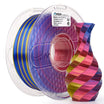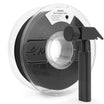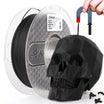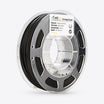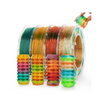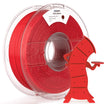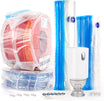3D printing has revolutionized the manufacturing industry by enabling the creation of complex and intricate objects with relative ease. However, one of the most common problems encountered during 3D printing is nozzle clogging. When the nozzle becomes clogged, the printer cannot extrude the plastic filament properly, leading to failed prints and loss of time and materials. In this blog, we will explore the reasons behind nozzle clogging and some solutions to prevent it.

Reasons for Nozzle Clogging:
1. Dust and debris: The filament used in 3D printing is prone to picking up dust and debris from the environment, which can cause nozzle clogging.
2. Low-quality filament: Poor quality filament that contains impurities or is not of the correct diameter can also cause nozzle clogging.
3. Overheating: Excessive heat can cause the filament to melt and stick to the inside of the nozzle, leading to clogging.
4. Incorrect retraction settings: Retraction is the process of pulling back the filament slightly to prevent oozing. Incorrect retraction settings can cause filament to accumulate in the nozzle, leading to clogging.
5. Long printing time: Long printing times can cause filament to degrade, making it more prone to clogging.
Solutions to Nozzle Clogging:
1. Regular maintenance: Regular cleaning of the nozzle and replacing worn-out parts can prevent clogging.
2. Filament quality: Using high-quality filament can significantly reduce the likelihood of clogging.
3. Temperature control: Proper temperature control can prevent overheating and reduce the likelihood of clogging.
4. Retraction settings: Adjusting retraction settings can help prevent filament buildup in the nozzle.
5. Avoid long printing times: Splitting a large print into smaller sections can prevent filament degradation and clogging.

In conclusion, nozzle clogging is a common problem encountered during 3D printing. However, by understanding the reasons behind nozzle clogging and implementing preventive measures such as regular maintenance, using high-quality filament, and proper temperature control, it is possible to minimize this problem and enjoy successful 3D printing.




